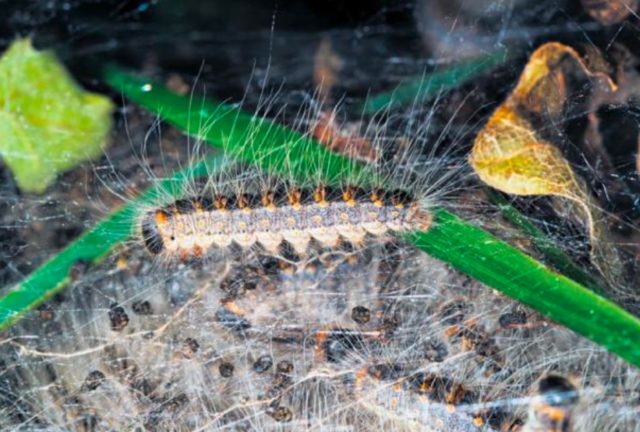Warmer weather in Europe can lend itself to adventures with your family, but it also means the return of some pesky critters.
The oak processionary moth caterpillars are a tree defoliating pest that pose health risks to humans and pets in their larval stages. While touching an oak processionary moth caterpillar is most likely not life threatening, it can be extremely painful.
Public Health Command Europe offers the following tips for protecting yourself against these fluffy little creatures.

The oak processionary moth caterpillar is easy to identify because of the long black stripe down the back of its yellowish white body covered in gray hairs.
“The caterpillar’s hairs contain thaumetopoein, a toxin that may cause itchy, painful rashes if the hairs come in contact with your skin or can exacerbate asthma if inhaled,” according to PHCE entomologist Capt. Megan Heineman.
As their name suggests, oak processionary moth caterpillars are found mostly in oak trees during early summer months from May to July. Additionally, they typically follow one another head-to-tail in “processions” on the ground and on trees from their nests to their feeding places.
When a person comes in contact with the caterpillar’s hairs it can irritate the lungs, eyes and skin and can even cause a severe allergic reaction. If the hairs come in contact with a person’s eyes they may develop conjunctivitis. Additionally, the caterpillar’s hairs can affect pets, in particular their noses and snouts due to their sniffing behavior.
The best defense against these caterpillars is to avoid them. Don’t touch them. Living and dead caterpillars are equally harmful. PHCE recommends avoiding oak trees and dense forests; be vigilant during outdoor activities; change clothes after outdoor activities; and leash your dogs when close to oak trees to prevent them from getting in contact with the caterpillars.
It is recommended to report any nest findings of oak processional moth caterpillars to the garrison. If off-post, report it to the local authorities, and keep your distance from the location.
“It is also important to ensure children can recognize oak processionary moth caterpillars and their nests and know to stay away from them,” said Heineman.
According to Heineman, the symptoms should clear up on their own. However, if symptoms persist, call your local military treatment facility for an appointment.
People react differently and some reactions may be severe. If you experience difficulty breathing or chest pain, do not wait for an appointment with your primary care manager. Seek immediate medical attention.
Check Public Health Command Europe’s Facebook page for more health information.


